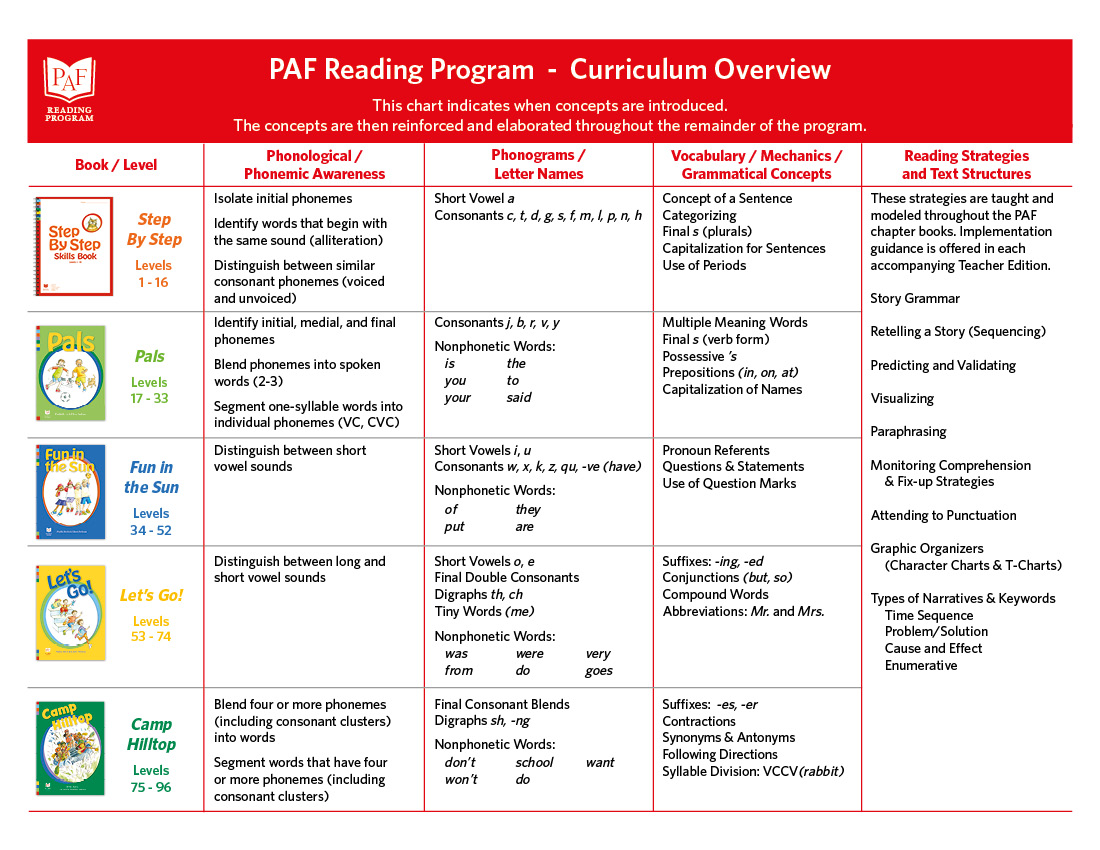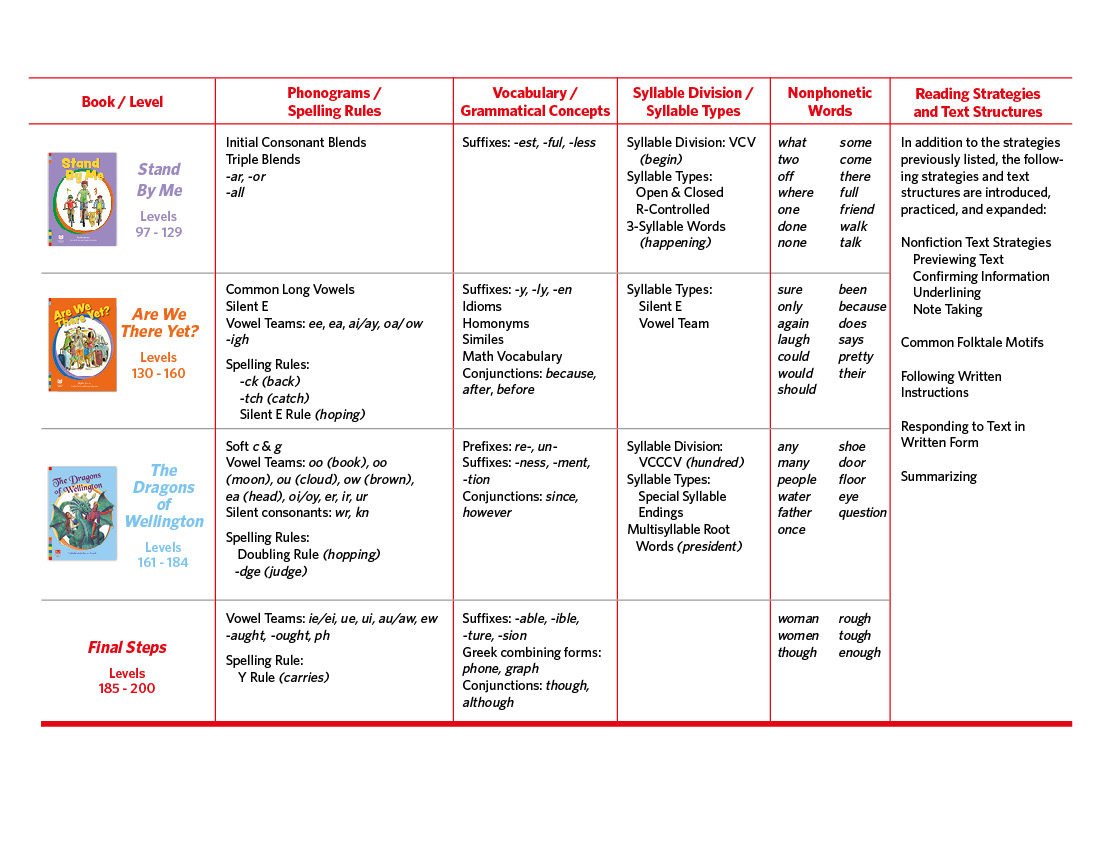0
You have 0 items in your cart
The PAF Reading Program is a comprehensive structured language program for teaching reading, spelling, and handwriting using multisensory techniques. It is an effective beginning reading program for all children and incorporates practices supported by scientific research. When begun in kindergarten or first grade, it prevents reading failure in children at risk for learning difficulties. In addition, it can be used as an intervention program.
The PAF Reading Program is
PAF is a comprehensive reading program created to meet the needs of novice readers to ensure that they develop a solid foundation upon which mature reading skills can develop. As a beginning program, it focuses on the development of accurate reading and oral language. They are the bedrock of reading comprehension.
PAF teaches oral language through the direct instruction of both semantics (vocabulary) and syntax (grammar). Vocabulary is developed in both quantity and quality through the study of multiple meaning words, synonyms, antonyms, and figurative language. Because comprehension often breaks down at the sentence level, syntax is addressed with direct instruction in the use of conjunctions and other cohesive devices. Children read sentences of increasing complexity throughout the program.
In addition, reading comprehension is developed during daily monitored oral reading in which the teacher models how to apply a variety of reading comprehension strategies. Students are exposed to text structures, such as problem/solution, cause and effect, and time sequence, each with its own vocabulary. They will also learn the basic elements of storytelling: character, setting, plot, conflict, and resolution.
Comprehension is strengthened in every lesson of the program. The ultimate goal of PAF is for children to understand text independently.


The PAF Reading Program provides children with the building blocks they need to develop a solid reading foundation critical for becoming proficient readers. Concepts are taught directly and explicitly in a specific sequence, with immediate teacher feedback. Each lesson offers children with the practice needed to develop word recognition and fluency, while teachers model comprehension strategies to understand fiction and non-fiction text. This teaching technique results in minimum frustration—and maximum success, leading not only to an improvement in reading skills, but a sense of mastery and self-esteem.
Children are taught:
Each PAF reading lesson has five components: Review, Introduction of New Material, Dictation, Reading, and Reinforcement, regardless of the level in the PAF instructional sequence. The PAF materials are very easy to use. The Teacher Handbook facilitates effective planning of lessons and includes precise instructional language. The student materials are engaging and support the direct instruction model. We invite you to explore three PAF sample lessons.
Reading to children, while not part of a PAF lesson, is crucial for all beginning readers. Reading books with higher level language is important because young readers understand much more sophisticated oral language than what they can read.
Reading aloud:
Set aside time each day to read to students from a variety of literature and nonfiction. However, you should not take time away from direct reading instruction.
Once students have read The Dragons of Wellington, which has a Lexile level of 620L, they will be ready to transition into uncontrolled text. While reading chapter books, students can be taught the skills in Final Steps.